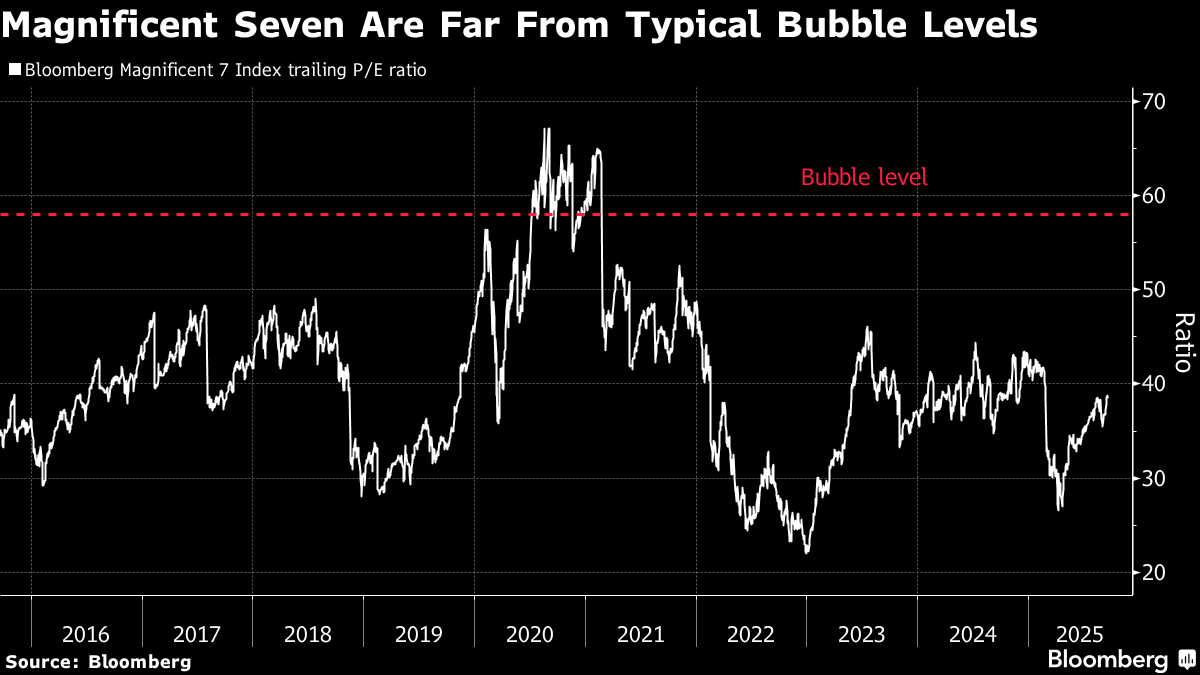BofA’s Hartnett Says Magnificent 7 Stock Bubble Is Still Growing
(Bloomberg) — The bubble that has formed in US Big Tech stocks over the past two years has further to run and investors should position for more gains, according to Bank of America Corp. (BAC) strategists.
A BofA team led by Michael Hartnett studied 10 equity bubbles since the start of the previous century, finding that these periods of extreme overvaluation produced average trough-to-peak gains of 244%. That suggests that, after rising 223% from their March 2023 low, the so-called Magnificent Seven cohort has “more to go,” the strategists wrote in a note.
Most Read from Bloomberg
Current valuations also support the notion of further gains for the group, the strategists said. Past stock bubbles typically ended with trailing price-to-earnings ratios of 58, with the benchmark of these stocks 29% above its 200-day moving average.
The seven — Tesla Inc. (TSLA), Alphabet Inc. (GOOG, GOOGL), Apple Inc. (AAPL), Meta Platforms Inc. (META), Amazon.com Inc. (AMZN), Microsoft Corp. (MSFT) and Nvidia Corp. (NVDA) — have a trailing P/E ratio of 39 and are still only 20% above their 200-day DMA. This renders them the “best bubble proxy today,” Hartnett and his team wrote.
Appetite among investors for US tech megacaps has driven stocks to all-time highs this year and shows no signs of abating. The Magnificent Seven group recovered swiftly from the shocks caused by the Chinese artificial intelligence start-up DeepSeek and the turmoil around Trump Administration trade-tariff announcements.
The S&P 500 Info Tech Index has surged 56% from its low in April, with investors buying into every dip along the way.
A positive macro-economic backdrop, the sustained frenzy around AI, along with expectations of further Federal Reserve interest-rate cuts are acting as tailwinds for the sector. In fact, the BofA fund manager survey released this week showed that “Long Magnificent Seven” was regarded as the most crowded trade for the second month running by 42% of respondents.
Hartnett and his team noted that bubbles tend to be short and very concentrated. Back in 2000, as internet-related stocks rallied to extreme levels, the tech sector rose 61% in six months to its peak, while every other S&P 500 sector was down that year.
Meanwhile, investors should also “barbell” their exposure to the Big Tech bubble with some holdings in “distressed value,” as these spurts of hyper-valuation boost economic growth as they unfold. Hartnett said current potential examples of such plays included Brazil, the UK and global energy stocks.


